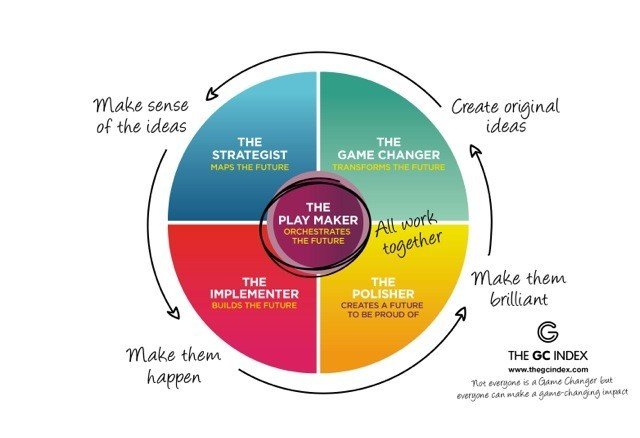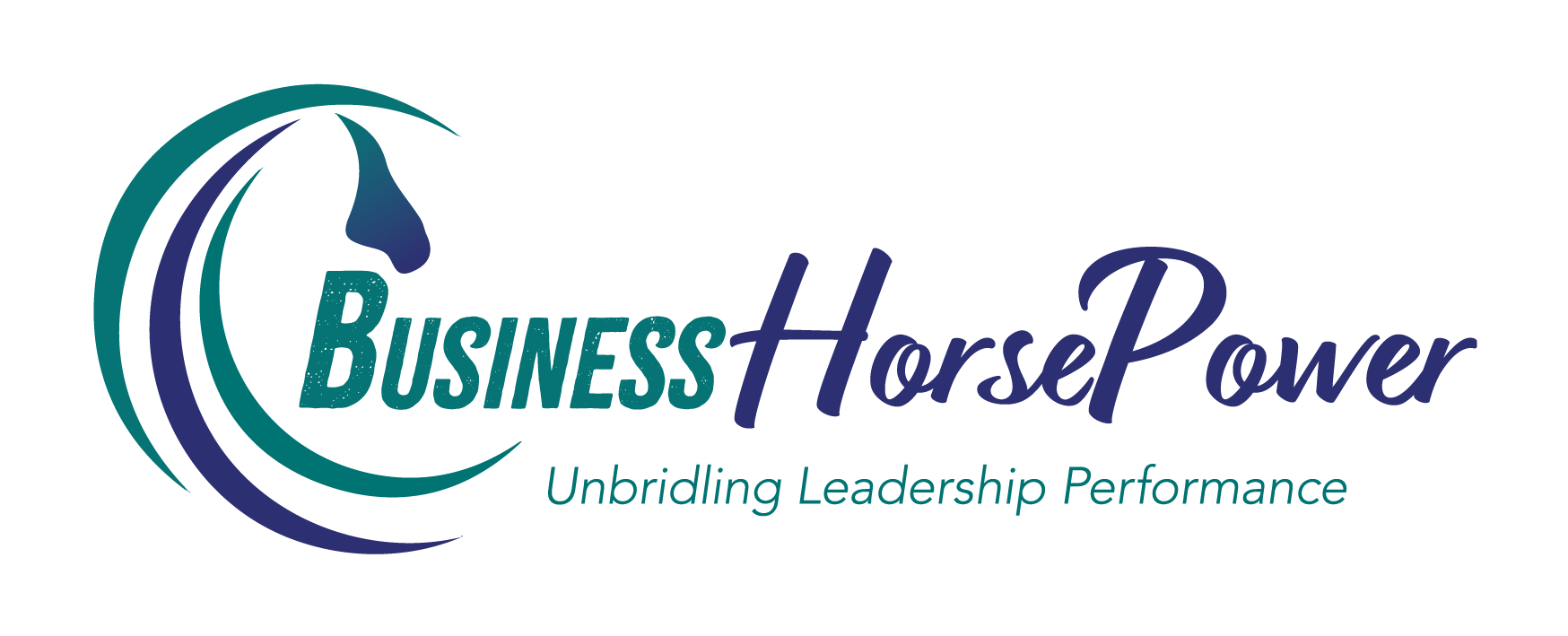
by Julia Felton | Mar 11, 2024
n the ever-evolving landscape of business, one thing remains constant: the paramount importance of organisational culture.
Peter Drucker’s famous quote, “Culture eats strategy for breakfast,” succinctly captures the significance of culture in shaping the destiny of companies.
However, in the realm of training and development, we might equally assert that “Culture eats your training for breakfast.” Indeed, the organisational culture can either foster or hinder the effectiveness of training efforts. Without proactive measures to counter-cultural inertia, organisations risk undermining the very training initiatives designed to propel them forward.
Consider this scenario: You invest significant resources into training your workforce on cutting-edge methodologies and best practices. Yet, upon returning to their roles, employees revert to familiar routines and approaches, neglecting the newfound knowledge and skills. Why does this happen? It’s often the result of entrenched cultural norms that prioritise familiarity over innovation and memory over critical thinking.
During training sessions, it’s essential to engage participants in reflective discussions about the organisational culture’s influence on their behaviour and decision-making. Ask them how tightly they feel bound by existing norms and practices. Encourage open dialogue about the challenges they anticipate in applying their learning to their job roles. By acknowledging and addressing these cultural barriers upfront, organisations can better prepare employees for the transition from the classroom to the workplace.
The transfer of learning from training environments to real-world applications is often fraught with obstacles, chief among them being cultural resistance. Employees may encounter resistance from peers or supervisors who are entrenched in traditional methods and sceptical of change. Additionally, organizational structures and processes may inadvertently reinforce the status quo, making it difficult for individuals to adopt new approaches.
So, how can organisations navigate this cultural headwind and ensure that training initiatives yield tangible results? Here are some strategies to consider:
- Cultural Awareness: Foster a culture of awareness by encouraging employees to critically examine existing norms and practices. Create opportunities for open dialogue and feedback, allowing individuals to voice their concerns and perspectives without fear of retribution.
- Leadership Buy-In: Secure buy-in from organizational leaders by demonstrating the value of training initiatives in driving innovation and growth. Leaders must lead by example, actively championing new approaches and supporting employees in their learning journey.
- Continuous Reinforcement: Recognize that changing cultural norms takes time and ongoing effort. Implement mechanisms for continuous reinforcement, such as follow-up training sessions, coaching, and mentorship programs, to sustain momentum and ensure that new behaviours become ingrained habits.
- Incentivise Learning: Create incentives and rewards for employees who embrace new methodologies and demonstrate a willingness to challenge the status quo. By aligning incentives with desired behaviours, organisations can motivate individuals to actively engage in the learning process and apply their knowledge effectively.
- Cross-Functional Collaboration: Foster collaboration across departments and teams to break down silos and facilitate knowledge sharing. Encourage employees to collaborate on projects and initiatives that require the application of new skills, fostering a culture of experimentation and learning.
In conclusion, organisational culture plays a decisive role in shaping the success of training initiatives. By acknowledging and addressing cultural inertia, organisations can create an environment conducive to learning and innovation.
Through a combination of awareness, leadership support, continuous reinforcement, incentivisation, and collaboration, organisations can overcome cultural barriers and unleash the full potential of their workforce.
Remember, culture may eat your training for breakfast, but with the right approach, you can turn it into a nourishing feast for growth and development.
Julia Felton (aka The Business Wrangler) is the founder of Business HorsePower. Business leaders, entrepreneurs and executives hire her to accelerate their business performance by harnessing the energy of their people to work more collaboratively together. By aligning purpose with actions the team achieves exponential results as everyone starts pulling in the same direction.
Julia believes that business is a force for good and through designing purpose-driven businesses that leverage the laws of nature, and the herd, you can create businesses founded on the principles of connection, collaboration and community that make a significant impact in the world.

by Julia Felton | Dec 1, 2023
Having sent a large part of this month out in nature, including studying wild horses in Poland I have gained some profound insights on collaboration, cooperation, and profitability, all inspired by the wisdom of Mother Nature herself. I firmly believe that nature holds the key to solving many of our world’s problems, so I’m excited to explore how we can draw inspiration from her remarkable ecosystems to create a more harmonious and prosperous future.
In a world driven by profit margins and competition, it’s easy to overlook the incredible lessons that the natural world offers. Nature, after all, has been refining its strategies for billions of years, and it has a lot to teach us about working together for mutual benefit.
Lesson 1: Symbiotic Partnerships
One of nature’s most stunning examples of collaboration can be found in the intricate relationships between species. Take, for instance, the extraordinary partnerships between bees and flowers. Flowers provide nectar and pollen, essential for bees’ survival, while bees aid in pollination, enabling the flowers to reproduce. This co-dependency is not solely about profit for either party; it’s a mutually beneficial relationship that ensures the continuation of both species.
In the business world, we can learn from these partnerships by seeking symbiotic relationships that benefit all involved parties. Collaboration doesn’t always have to be about immediate financial gain; it can also be about mutual support, shared resources, and a long-term perspective.
Lesson 2: Ecosystem Resilience
Nature’s ecosystems are models of resilience and sustainability. When one component of an ecosystem is under stress or faces a challenge, the entire system often adapts to support it. For example, when a drought threatens a forest, the trees release water vapour into the air, creating their microclimate, which can help prevent further moisture loss.
In the business world, we can apply this lesson by fostering environments where teams and organisations adapt and support one another when facing challenges. This resilience ensures that setbacks are only temporary and can lead to greater collective success in the long run.
Lesson 3: Diversity and Inclusion
Biodiversity in nature is not just a nice concept; it’s a critical element for the health and survival of ecosystems. A rich diversity of species contributes to the overall resilience and productivity of an ecosystem. Different species fulfil various roles, each one essential to the functioning of the whole.
Likewise, in business, diversity and inclusion should not be viewed solely as a matter of compliance but as a strategic advantage. A team with diverse backgrounds, experiences, and perspectives is better equipped to tackle complex problems and adapt to an ever-changing business landscape.
Lesson 4: Adaptation and Innovation
Nature is constantly evolving and innovating. Species that cannot adapt to changing conditions face extinction. On the other hand, those that embrace change and innovation thrive. This adaptability is a powerful lesson for the business world, which is constantly undergoing technological, social, and economic transformations.
In conclusion, Mother Nature is a treasure trove of lessons that we can apply to the business world and beyond. By focusing on collaboration, cooperation, and long-term benefits rather than immediate profit, we can create a future that is not only profitable but also sustainable and harmonious. It’s time we recognise that the natural world is our most profound teacher, guiding us toward a more prosperous and balanced future. Let’s embrace these lessons and build a world where we work together, just like the ecosystems that have thrived for eons.
Julia Felton (aka The Business Wrangler) is the founder of Business HorsePower. Business leaders, entrepreneurs and executives hire her to accelerate their business performance by harnessing the energy of their people to work more collaboratively together. By aligning purpose with actions the team achieves exponential results as everyone starts pulling in the same direction.
Julia believes that business is a force for good and through designing purpose-driven businesses that leverage the laws of nature, and the herd, you can create businesses founded on the principles of connection, collaboration and community that make a significant impact in the world.

by Julia Felton | Nov 23, 2023
Increasingly leaders are beginning to understand the power that the environment plays in business and how everything that happens is interconnected. An individual, a team and an organisation do not exist in isolation but rather, they are part of a complex eco-system, where one part impacts the next.
Consequently, traditional leadership thinking that focuses on the “me rather than we” approach is becoming outdated. Great leaders understand that business is never about them and their ego but rather about how they can serve those that they work with – either directly or indirectly. This results in leaders having to adopt an eco-system mindset.
So what is an eco-system mindset?
An eco-system mindset involves having an ‘outside in’ perspective. It means that rather than thinking first about self and team and then what could come from partnering with other individuals and teams, the ecosystem mindset turns this on its head and looks at the vision, purpose and strategy for the whole, and then sees the parts that individuals and teams could contribute.
This can be challenging because at some point, an individual or team may need to step aside for the good of the ecosystem, something not everyone is ready to embrace yet. However, when individuals and teams adopt an eco-system mindset, they are better positioned to accept or even make this choice because they are able to see additional opportunities where they can contribute and make an impact.
Amy Edmondson, in her book Teaming, writes that ‘fast-moving work environments need people who know how to team, people who have the skills and flexibility to act in moments of potential collaboration when and where they appear.’
In the VUCA world in which we will, where adaptability and flexibility are key to navigating uncertainty, the eco-system mindset focuses on opportunities for hyper-collaboration, where the people, projects, and even the processes and approaches that are prioritised shift constantly. In this environment, rather than focusing on team effectiveness at the level of the team, it is more effective to develop teaming skills in every individual.
Then, no matter which team a person is on, they can contribute to its success by bringing their skills for being an effective team member. The effectiveness of a team where all team members bring a teaming skillset never depends on just one person, making it resilient in the face of the changes and challenges hyper-collaboration brings.
The development of the COVID vaccine is one such example. No one company had the answer in isolation but by working together, there were many partnerships were formed, some of them quite unlikely, that allowed this innovative vaccine to be created and made available in such a short time frame.
Hyper-collaboration is a concept based on the belief that most effective team outputs will result from collaborations with other, sometimes unexpected, partners. Partners that have a completely new perspective on the current issues we are facing. This diversity and variety of complementary capabilities coming together to solve a particular problem create success rather than stability and longevity.
If you thought about challenges this way, and knew that a solution already existed somewhere, but most likely not in the first place you looked, how would that change your approach?
Cracking The Code
Four avenues that you might want to explore:
- Look for the unexpected: consciously think outside the box and explore opportunities and partnerships in other industries/sectors
- Expand your reach: when it comes to hyper-collaboration it’s a case of the more the merrier. The more diverse the perspective the more opportunities for a significant breakthrough. Sure, more partners is challenging to manage but the benefits significantly outweigh the challenges.
- What new technology can you adopt: when used appropriately technology can be a great enabler of change, so what technology can you apply from related industries to help solve your problems.
- Embrace change: the only certainty is that there will be change so make sure to inform and educate all stakeholders about what is happening and ensure they understand how this relates to the overall purpose and mission of the business.
Finally, given the increasingly complicated needs we are facing, in our teams, organisations, regions, and even in the world, hyper-collaboration is likely to increase even further. We can prepare people for successful hyper-collaboration by building an eco-system mindset and teaming skills in everyone in our organisation.
This is not something that will happen overnight, but with consistent action we can help move the needle and in doing so create empowered, productive teams that are agile and can respond to the uncertain conditions in which we all now live.
Julia Felton (aka The Business Wrangler) is the founder of Business HorsePower. Business leaders, entrepreneurs and executives hire her to accelerate their business performance by harnessing the energy of their people to work more collaboratively together. By aligning purpose with actions the team achieves exponential results as everyone starts pulling in the same direction.
Julia believes that business is a force for good and through designing purpose-driven businesses that leverage the laws of nature, and the herd, you can create businesses founded on the principles of connection, collaboration and community that make a significant impact in the world.

by Julia Felton | Jul 3, 2023
Teamwork is paramount to the success of any business and leaders need to understand that without every team member pulling together in the same direction (aka with the same purpose) then success is likely to be curtailed, maybe not in the short term but definitely over the longer term.
Whilst individuals play the game it is teams that win championships whether that is in the sports arena or on the business playing field. Teamwork remains the ultimate competitive advantage in business today, because it is so powerful and rare.
“Not Finance. Not Strategy. Not Technology. It is teamwork that remains the ultimate competitive advantage, both because it is so powerful and so rare” ‒ Patrick Lencioni
There are several benefits of being in a team and these include:
- Teams involve more people and therefore comprise more resources – time, ideas and energy – available than one individual would have
- Teams allow the leaders to maximise their potential and minimise their weaknesses
- Teams provide multiple perspectives on how to reach the goal, as each individual will see the problem in a different light. This allows for a creative flow of ideas, and the stumbling blocks that no one person might see can easily be navigated
- Teams share the credit for victories and the blame for losses. This fosters genuine humility and authentic communication
- Teams help keep leaders accountable for the goals
- Teams can simply do more than the individual
So why do business leaders fail to harness their teams for success and what are some of the myths we believe about teams. I believe there are five myths that keep many leaders stuck, not operating effectively.
Myth One: Teams are harmonious groups of people who compromise their needs for the sake of the group
Reality One: Good teams are made up of a diverse group of people with different perspectives and needs. When this diversity is recognised and embraced it becomes a real strength that can help the team overcome roadblocks that might derail a project.
So with this in mind it is important that within the team we identify the range of talents of all the team members and help team members understand the impact and contribution they can give to the team. Only then will team members feel engaged and motivated and want to actively participate.
Myth Two: Team conflict is unhealthy
Reality Two: Conflict can be healthy and should be harnessed for the common good, rather than suppressed.
Conflict is an energy source that when directed towards the team’s primary goal or mission can help create momentum and actually move a project forward. The challenge comes from the fact that many people dislike conflict and so suppress it. This creates frustration and a negative build-up of energy that ultimately can derail a project. Better the conflicting energy is surfaced and channelled in a positive way to come up with new ideas and approaches that help drive the project forward rather than derail it
Myth Three: Most people like teamwork
Reality Three: Whilst we often think that people enjoy working in teams, after all humans are social animals and we enjoy interaction with others, research by the Wright Consultancy discovered that only 33% of the working population enjoyed teamwork, 33% of the working population preferred working alone and solo, whilst the remaining 33% were pretty neutral as to their stance.
The challenge then for leaders is to know the drivers of the people in their teams and their preferred working style and then create roles that best leverage that person’s skills and method of working
Myth Four: Teams are easy to influence and manage
Reality Four: Leading and managing teams requires a different set of skills from that required for day-to-day management. This is because when you are leading teams you need to be able to inspire and motivate others. Also, you need to practice and understand the difference between delegation and empowerment, as teams work best when given direction and then allowed to decide how to reach that goal themselves. Micro-management hampers engagement and stops innovation as team members need to feel that the leader has their back and trusts them implicitly to do the job
Myth Five: Senior Leaders encourage teamwork
Reality Five: Most leaders are anxious about teamwork and the potential loss of power or control
A study of European managers in the 1990’s discovered that whilst senior leaders outwardly encouraged teamwork internally they were uncomfortable with the process and the potential for it exposing their own weaknesses and loss of control. This then often results in office politics with one team withholding resources from another in order to exert their authority.
Much of this thinking is driven by fear because great leaders realise they always need to hire people better than themselves so that their weaknesses can be mitigated for the ongoing success of the business. When leaders realise that it is results that matter and not their ego, they become more collaborative and work together across various aspects of the business to achieve success.
Nature understands the importance of teamwork and how everything is interdependent and synergistic. This is what drives unity and harmony in nature. So perhaps there is something we can learn from it and apply to our own efforts at improving teamwork, because as in the words of Simon Mainwaring
“Creating a better world requires teamwork, partnerships and collaboration, as we need an entire army of companies to work together to build a better world within the next few decades. This means corporations must embrace the benefit of co-operating with one another”
Julia Felton (aka The Business Wrangler) is the founder of Business HorsePower. Business leaders, entrepreneurs and executives hire her to accelerate their business performance by harnessing the energy of their people to work more collaboratively together. By aligning purpose with actions the team achieves exponential results as everyone starts pulling in the same direction.
Julia believes that business is a force for good and through designing purpose-driven businesses that leverage the laws of nature, and the herd, you can create businesses founded on the principles of connection, collaboration and community that make a significant impact in the world.

by Julia Felton | May 3, 2022
3 May 2022, Yorkshire, UK. – Julia Felton believes in a world where rather than humanity solving the problems of nature, nature can solve the problems of humanity. She believes that there exists in nature a blueprint for a better way to live and lead businesses and she presents these findings in her latest book, Unbridled Business: Unlocking Nature’s Wisdom To Reinvent Leadership.
There is no doubt that the events of the past two years have changed everything. Even before the pandemic business needed to change but recent events have accelerated this. No longer do businesses simply need to change, they need to reinvent if they are to become agile and adaptable to navigate the uncertainty in which we now live.
We now have the opportunity to shed all the old work practices that no longer serve us and start afresh.
The challenge is that up to now there hasn’t existed a blueprint on how to do this. How do we move from the command and control leadership structures designed for the industrial age to a leadership style based on connection, collaboration and community?
Julia discovered that a solution lies in nature and herds of horses. After all, they have navigated change and survived for millions of years. In Unbridled Business, she codifies this solution into the Unbridled Business BlueprintÔ that can be used to help business leaders reinvent their business so that it is fit for purpose for the 21st century.
It all starts with Embedding The Purpose into everything you all and then Evolving The Leadership, Empowering Others To Act and Engaging The Environment and the result is Unbridled Performance. A business that can create real impact whilst delivering increased productivity, profitability and team engagement.
Why look to nature and herds of horses?
1) Adaptability – Horses have existed on the planet for over 50 million years, whilst humans have only lived here for 6 million years. They have learnt how to become agile and adapt to changing situations to survive.
2) Leading Through Uncertainty – There exists in herds of horses a model to help us lead through the uncertainty, that this VUCA world presents. It’s based on the premise of four simple steps – The Diamond Model of Leadership.
3) Shared Leadership – In this attention vying world there is simply no way that one person (typically the leader) can know everything. Now more than ever there is a need for Shared Leadership, with the best person stepping forward at the right time.
One of the biggest awakening moments for humanity from the Pandemic is that we are all inter-dependent and inter-connected. We all impact each other whether we are consciously aware of it or not. Nature has always understood the power of inter-dependency as everything works as a system in harmony together, and when something falls out of balance nature self-regulates itself to correct that imbalance. Nature understands the importance of the collective “we” rather than the “me” model of being that is so prevalent in society today.
These are all themes that Julia has addressed in her latest book Unbridled Business – Unlocking Nature’s Wisdom To Reinvent Leadership due for release 3rd May.
To book Julia for an interview today, please contact her:
Phone: +44 7710 124848
Email: connect@businesshorsepower.com
Website: www.businesshorsepower.com
Follow Her on Social Media:
www.linkedin.com/in/juliafelton
www.facebook.com/juliamfelton
www.twitter.com/julia_felton
Julia Felton (aka The Business Wrangler) is the founder of Business HorsePower. Business leaders, entrepreneurs and executives hire her to accelerate their business performance by harnessing the energy of their people to work more collaboratively together. By aligning purpose with actions the team achieves exponential results as everyone starts pulling in the same direction.
Julia believes that business is a force for good and through designing purpose-driven businesses that leverage the laws of nature, and the herd, you can create businesses founded on the principles of connection, collaboration and community that make a significant impact in the world.

by Julia Felton | Nov 12, 2019
In today’s VUCA world it is important to have leadership anchors (secure bases) to help us feel safe and secure. I don’t know about you but I often feel that I am being tossed around by all the turbulence that is happening around me. Sometimes I feel a bit like a boat that is being pounded by the waves and when I can’t control these situations it can create anxiety and stress. It’s hardly surprising that given the environment we live into today 1 in 4 people suffer from some form of mental health challenges.
So what can we do to minimise this anxiety? What leadership anchors can we put in place to help us feel secure during these turbulent times.
In his book Care to Dare author George Kohlrieser reveals how when you have an anchor or secure base it can help alleviate anxiety as you feel supported and acknowledged. Having a secure base or bases can help unleash astonishing performance that delivers exceptional results. In fact he defines having a secure base as “a person, place, goal or object that provides a sense of protection, safety and caring AND offers a source of inspiration and energy for daring, exploration, risk taking an seeking challenge.”
What surprised me most by this definition was that:
1. You can have multiple secure bases
2. Secure bases don’t just have to be people, they can be places, goals, objects or activities.
I know in the past I have often thought about security coming from other people but what I realised was that for me my horses are a secure base which is why they make such great partners for me to work alongside. I know they have my back and I trust them explicitly during our workshops to bring their best and challenge my clients in a daring way to step into their leadership greatness and become the person they are destined to be.
In today’s VUCA world business also has an increasing role in creating safety bases for our employees. With team members spending nearly a third of their week at work if they don’t feel safe they will not be as engaged and productive as they could be, and this will have a knock on effect on profitability.
Furthermore, the 2019 People Management Report conducted by the Predictive Index revealed that when team members feel that they have a secure base that gives them what Harvard Business School Professor Amy Cuddy refers to as Psychological safety they are less likely to quit.
“Psychological safety is a belief that one will not be punished or humiliated for speaking up with ideas, questions, concerns, or mistakes”
When leaders create psychological safety then 96% of team members feel that they can approach their boss with problems as they realise that they will not be judged for their ideas or contribution. Contrast this with just 43% of team members who feel they can speak up when there is little or no psychological safety.
In addition the data shows the subtle ways that managers can sabotage their teams and destroy psychological safety (e.g., not valuing employees’ unique skills, not being approachable, and not respecting personal values). While these aren’t outright displays of mistreatment, they still negatively impact the employee experience and contribute to low levels of team engagement.
The first step to creating a secure base with someone and in doing so provide psychological safety is by forming a deep connection with them – a bond. When people feel bonded to each other they trust each other. They know the other person has their back. There is a transparency in the relationship and both parties respect each other and value each other. These bonds are created through “water cooler talk” and actually investing time in getting to know your team members as individuals. Leaders need to know what makes every team member tick so they can effectively inspire and motivate them to be their best.
However, the rub here is that very few leaders can be an effective secure base for someone else if they don’t have their own secure base. This is one of the reasons that we often describe success in business as being a team sport. Few people can design a successful life without the support of others, and those that put success ahead of relationships often end up as “independent loners” and can often suffer from illness, addiction, depression and chronic loneliness. Conversely, those that put relationships ahead of goals can often end up failing to live up to their full potential.
So my challenge to you today is to get clarity on who or what are your secure bases, and where do you provide this role for others?. It can be really enlightening to understand where these drivers lie and how they impact you. Please share your thoughts with me.
A special thanks to Marie O’Hara and Coaching York for inspiring this post.
Julia Felton (aka The Business Wrangler) is the founder of Business HorsePower. Business leaders, entrepreneurs and executives hire her to accelerate their business performance by harnessing the energy of their people to work more collaboratively together. By aligning purpose with actions the team achieves exponential results as everyone starts pulling in the same direction.
Julia believes that business is a force for good and through designing purpose-driven businesses that leverage the laws of nature, and the herd, you can create businesses founded on the principles of connection, collaboration and community that make a significant impact in the world.

by Julia Felton | Apr 5, 2019
Modern offices are set up to suit one way of working: to satisfy people who thrive with a surplus of sensory stimulation.
However, while the spaces have evolved to embrace noise and volume, we’ve left behind the quieter people who prefer to work alone and who need silence to enter the realm of deep concentration.
Instead of providing a one-size approach to the office space, remember that different people work in different ways. Create break-out areas where people can complete their work silently and without distraction, or encourage employees to take phone calls outside.
Keep providing for the extroverts in the room and give them a space to collaborate effectively. Whether they’re introverted or extroverted, everyone has the tools they need to be creative, dedicated employees – and their work will improve as a result.
Allow for flexibility
Some employers assume that they need to tightly regulate working hours and locations in order to control the work output. While this might be true in some ways, it fails to account for differences in work styles, and prevents your employees from adapting to what suits them.
Instead, understand that your employees need flexible working arrangements. A lot of people work better from home so provide an option for your staff to pick up remote work a few times a week. Some thrive when they work at night – so let staff choose their own hours if that works for your company.
Reducing noise
One of the biggest distractions, especially in a modern, open-plan office, is noise. Whether that’s from co-workers typing at their keyboards, conducting loud phone calls or having meetings at their desks, it’s a barrier to the concentration that can stop most people getting any work done.
Because open-plan layouts are the most common culprit for this cacophony, it can be difficult to fix the problem. After all, we can’t go rearranging the whole floorplan – can we?
Instead of calling in a renovator to divvy the office up into bite-sized sections, consider:
- Setting aside meeting rooms for people to take phone calls in
- Making more rooms available for spontaneous meetings
- Creating a ‘quiet area’ where people can complete their work without distraction
- Investing in noise-cancelling headphones for your employees or allowing them to listen to music
- Permit a range of work styles, such as face-to-face meetings and digital communication
These are just some ways you can reduce noise and distraction in the office but there is more you can do to allow your staff to enter a deep space of concentration and focus on their work.
Putting this into practice
We can help you assess your physical environment and work on tweaks to help your employees grow. Whether you’re looking for some small-scale edits you can do to boost morale, or you want to train your employees in collaboration, we’re here for you. Speak to us to find out what we can do for you.
Julia Felton (aka The Business Wrangler) is the founder of Business HorsePower. Business leaders, entrepreneurs and executives hire her to accelerate their business performance by harnessing the energy of their people to work more collaboratively together. By aligning purpose with actions the team achieves exponential results as everyone starts pulling in the same direction.
Julia believes that business is a force for good and through designing purpose-driven businesses that leverage the laws of nature, and the herd, you can create businesses founded on the principles of connection, collaboration and community that make a significant impact in the world.

by Julia Felton | Dec 6, 2018
Yet again the most recent Gallup statistics paint a very dire picture of how low employee engagement levels are across the world. In the UK only 10% of employees are highly engaged which is marginally worse than the global average which is 15%.
Imagine what would happen if as business leaders we were able to double or even triple this. The impact on productivity, profitability and general levels of employee happiness would be demonstrable, and I bet a ripple effect would result in a better planet for all of us. You don’t get to be in the 100 Best Companies to Work For, for 19 years in a row, just by luck.
But how do we learn how to improve employee engagement and put people at the forefront of the business. A great solution is to learn from companies who have consistently been voted in the top 100 places to work. JM Family Enterprises is one of the largest, most innovative and diversified companies in the automotive industry. Based in Florida, its principal businesses focus on vehicle distribution and processing, finance and insurance, retail vehicle sales, and dealer technology services.
Stephanie Slate, Director of Talent Acquisition at JM Family Enterprises, shares one of the ways they create great levels of employee engagement is by referring to their people as Associates and not employees. This makes people feel that they work with the company and not for them. It instils a culture of inclusion and participation. (Personally, I hate the word employee as the word derives from the word employ, which means to use and to my mind this infers that we use our people, which simply is not right).
Secondly, she attributes the high associate engagement score to the fact that the company put People First. Everything the company does supports this culture including the recruitment process, where only people are hired who fit into the culture. Even if someone has amazing technical skills they will not be hired if they are a cultural misfit. This is a philosophy that both Zappos and Google also follow. In fact, they even encourage people to leave after 30 days by offering them a paycheck for doing so. This quickly weeds out anyone who has slipped through the recruitment process and does not align with the company culture.
Companies like JM family Enterprises, Zappos and Google take cultural fit so seriously that they will train Associates in the relevant skills needed for the job, as long as they have the right attitude and are a great cultural fit. After all the skills needed for different roles are changing at a rapid pace – think Facebook and Instagram didn’t even exist 15 years ago – yet the company culture is like its DNA and lives on long after different technological fads have been and gone.
Here are the six ways that you can create an engaged people-centric culture.
- Show Respect – make associates feel both valued and respected. Encourage the new associates to ask questions, to be curious, and they listen to them. With every new change that comes along, ensure that one of the first questions asked by senior management is “how will this impact our associates?’
- Demonstrate Caring – When a company cares about its associates it can show that by offering an excellent benefits package, but the caring can extend well beyond that. It could involve having medical staff and daycare services on-site; or providing support that helps associates in times of hardship. Some companies event have LifeCare Programmes, which is like an Associate concierge service that helps with non-work related issues.
- Communication and Connection – Communication is key to ensuring that your associates feel like they work with you and not for you. During the onboarding process, ensure all new Associates get to meet with a Vice President for a day, as well as meet and ask questions with the CEO. This not only helps the communication flow but also helps to make good connections between the new Associates and the Executive Management team.
- Encourage Empowerment – Encourage associates to ask questions and to challenge things, although this has to be done constructively and in ways that will benefit the company. Encourage associates to try new things and to learn from their mistakes, rather than to punish or criticize them for it. This helps to create an empowered workforce that is proactive when they see opportunities to benefit the company.
- Create Opportunities – One of the key reasons people cite for leaving their employers is a lack of career development and opportunities. When a company takes an approach where they hire for cultural fit and willing to train for a position, and they have five different divisions, there will always be opportunities to either advance or to try something different.
- Show Appreciation – Appreciation is one of our most basic human needs, after food, shelter, and safety, and JM Family do a great job at showing their Associates that they are appreciated. They have regular appreciation dinners and awards, and they also have a peer to peer appreciation program which allows people to recognize their colleagues for great work that they have done. Sometimes great work goes unseen by management, but programs like this allow for people to be recognized by their peers and for their efforts to be brought to the attention of the management.
Now for those of you thinking that creating an engaged workforce is a nice-to-do activity, think again. The results are compelling
- JM Family’s staff turnover rate is 7.1 per cent, which is well below their competitors, which helps to reduce cost, which increases profit.
- Their staff stays with the company 10.1 years on average, which compares very favourably with the national average of 4.2,
- Staff are happy to recommend the company, and the majority of new hires come from referrals which help to keep down recruitment costs and ensures that any open positions are filled quickly.
- The company has achieved record revenues in each of the last five years, with an average revenue growth of around 12 per cent per year since 2011.
So the result is when you put your people first you create an engaged, excited and empowered workforce, which helps to keep costs down and revenues growing, and who wouldn’t want that.
If you want to get more engagement in your team why not grab a copy of our new online training course. For a limited time, you can get free access using the COUPON CODE JF2 at check out. Simply register at https://www.engageandgrow.com.au/video-course
Julia Felton (aka The Business Wrangler) is the founder of Business HorsePower. Business leaders, entrepreneurs and executives hire her to accelerate their business performance by harnessing the energy of their people to work more collaboratively together. By aligning purpose with actions the team achieves exponential results as everyone starts pulling in the same direction.
Julia believes that business is a force for good and through designing purpose-driven businesses that leverage the laws of nature, and the herd, you can create businesses founded on the principles of connection, collaboration and community that make a significant impact in the world.

by Julia Felton | Mar 21, 2018
Just before Christmas I travelled to London for some meetings in the Kings Cross area. Now I remember the area well from when I first started working in London nearly 25 years ago. At that time Kings Cross had a reputation for being rather unsavoury. The haunt of prostitutes it was not the place to be seen, or indeed even really safe to hang out here.
Fast forward 25 years and the place has transformed. Now the home of Google and a number of other prestigious businesses, decorated in Christmas lights the place was alive with people. There was a vibrant party atmosphere and people just wanted to hang out and have fun. The buzz was amazing and people over flowed from the various bars and restaurants in the area. What a stark contrast there was to a quarter of a century earlier.
As I stopped to survey the transformation I reflected that what had happened at Kings Cross almost directly paralleled the change I witness in organisations. Often the business owner does not realise how bad things have become. Often it takes a negative event or a very brave leader to decide to embrace change and make a real difference in the organisational culture. Just like it took inspirational, visionary leaders to envisage a better Kings Cross, the same is true in business. All businesses require visionary Game Changers to challenge the status quo and help transform the business to another level.
And just like the redevelopment of Kings Cross was inconvenient and took time, so is cultural change. It is often a messy process and at times you might want to give up, but stick with it because eventually a beautiful butterfly will emerge. 10 times better than what was there before, it will shine a beacon on what is possible.
The only question that remains is are you brave enough to transform your business? Are you bold enough to really see what is going on and then get everyone engaged and aligned behind a shared purpose that transforms the business and takes it to new heights?. If you are then I’d love to chat with you and lets explore what’s possible for you and your business.
Julia Felton (aka The Business Wrangler) is the founder of Business HorsePower. Business leaders, entrepreneurs and executives hire her to accelerate their business performance by harnessing the energy of their people to work more collaboratively together. By aligning purpose with actions the team achieves exponential results as everyone starts pulling in the same direction.
Julia believes that business is a force for good and through designing purpose-driven businesses that leverage the laws of nature, and the herd, you can create businesses founded on the principles of connection, collaboration and community that make a significant impact in the world.

by Julia Felton | Feb 7, 2018
Many traditional corporate organisations are struggling to adapt to the demands of a new world that is rapidly changing around them. They are clinging on to the same ideas, talent management models, and ways of working with leaders who are either oblivious to the current mindset or too frightened to instigate change. Research by the GC Index suggests that Game Changers, the very people with the potential to initiate and drive transformational change, are rarely able to make their mark in corporate settings.
Game-changing is different to innovation. Innovators build on what has been done before: the pursuit of excellence through continuous improvement and incremental change. It’s Game Changers who can help trigger and drive transformational change.
The reality is that many organisations are driving their vision through the need for innovation. They often deliver this in quite a controlled way, by investing in innovation hubs, labs, processes and programmes.
So here are six ways that organisations that create game changing teams and cultures
1) FOCUS ON CONTRIBUTION
We need to do more than focusing solely on past experience and who is ‘available’ to work on a project. Instead, we should focus on the real contribution that individuals can make – focus on who is ‘best’.
By understanding what each person can contribute to their team, project and to the wider organisation, leaders are far more likely to create a game-changing culture.
2) IDENTIFY YOUR GAME CHANGING TALENT
In a world where today’s employee can be tomorrow’s competitor, identifying and embracing Game Changers is critical to long-term business performance. The GC Index is a new organometric, which enables organisations to identify their Game Changers.
Companies are using The GC Index to better understand the profile of their organisation and teams. It helps them maximise the contribution individuals can make at all levels and to ensure they create game-changing teams.
3) HELP GAME CHANGERS TO DEVELOP CORPORATE SKILLS
Most Game Changers find it difficult to navigate their way around a traditional corporate organisation. As a result they are often seen as dysfunctional or slightly awkward.
It’s important to help Game Changers understand the contribution other people make, and how others can help realise their game-changing idea.
By helping them recognise that some people will find their game-changing nature unsettling at times, and by giving them the tools to influence other people, they are far more likely to be able to make a positive game-changing contribution.
4) CREATE A GAME CHANGER COHORT
The CG Index research suggests Game Changers appear to naturally group together – by doing so they are able to express themselves freely and often more likely to realise their potential. There are lots of examples of this, whether it is in Silicon Valley, artists in Paris, or Fintech hubs in global financial districts.
Giving Game Changers a space to work together can promote both knowledge transfer and retention, in addition to increasing commitment and engagement through valued interpersonal connections.
5) FOCUS ON CULTURE CHANGE – EDUCATE MANAGERS
A fifth priority for organisations is to acknowledge that without changing the attitudes of managers and leaders, the engrained culture will continue to undermine progress towards achieving a game-changing culture.
We need to educate managers so that they understand the importance of game-changing talent and how to manage Game Changers. We also need to get them to start shifting their mindsets and put contribution and impact at the heart of their talent decisions. This focus on contribution will break down any inherent ‘unconscious bias’ and move managers out of the ‘fail safe zone’ to one where firstly they themselves feel ‘safe to fail’.
6) FIND A GAME CHANGER CHAMPION
Creating a game-changing culture requires an element of risk and therefore it’s important to have a Game Changer champion at the top.
It really needs someone on the Board who understands Game Changers and what is required to ensure they deliver value. Ground breaking creativity and innovation may lie with one individual. But it’s only a game-changing team that can achieve step change innovation and transformation that has longevity.
If you want to discover more about what type of Game Changer you are then why no join us for the launch of The ChangeMaker Profile powered by the GC Index on Tuesday 27th February in London. You can secure your place here.
The ChangeMaker Profile powered by the GC Index is a focused solution for those in the world of change and change management, which was developed in response to world-wide client demand. It leverages its framework of impact and contribution to support individuals, teams and organisations, throughout the transformational change process and is often used by organisations and individuals alongside other change management tools to give them the foundation to kick-start their change journey.
The profile allows people to understand how they can play to their natural strengths and maximise their contribution to change as an individual and as part of a team.
Can’t make the event but want to learn more, simply drop me a line at Julia@businesshorsepower.com and we can have a conversation to explore how this solution could benefit your organisation.
Julia Felton (aka The Business Wrangler) is the founder of Business HorsePower. Business leaders, entrepreneurs and executives hire her to accelerate their business performance by harnessing the energy of their people to work more collaboratively together. By aligning purpose with actions the team achieves exponential results as everyone starts pulling in the same direction.
Julia believes that business is a force for good and through designing purpose-driven businesses that leverage the laws of nature, and the herd, you can create businesses founded on the principles of connection, collaboration and community that make a significant impact in the world.
















